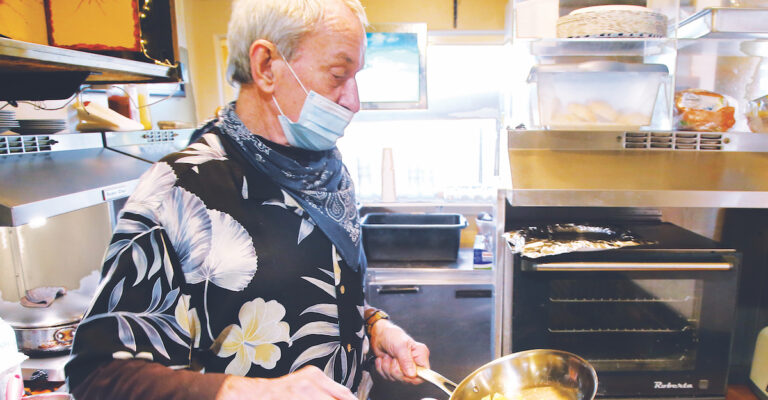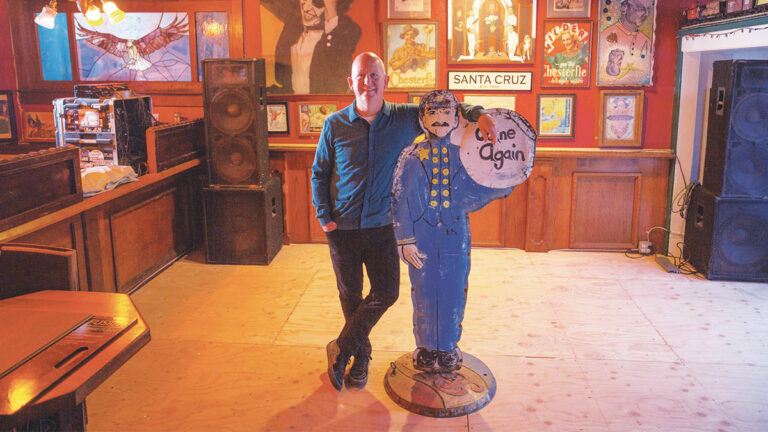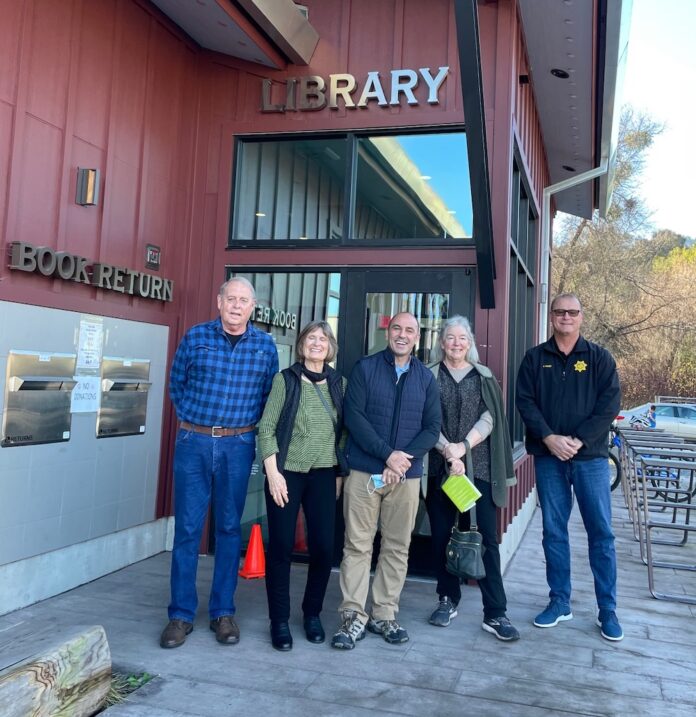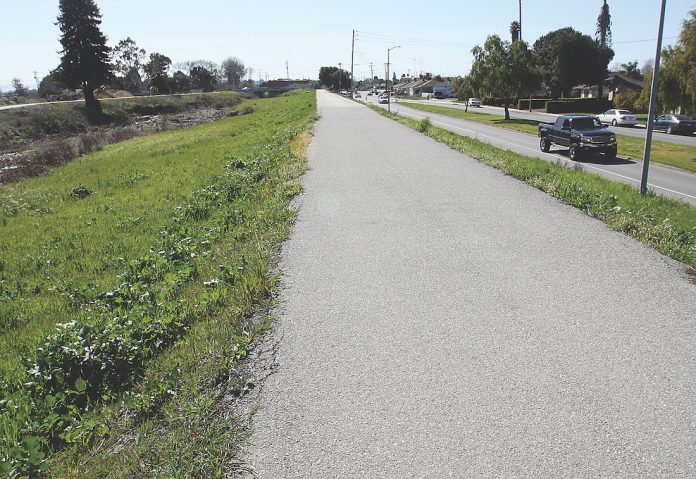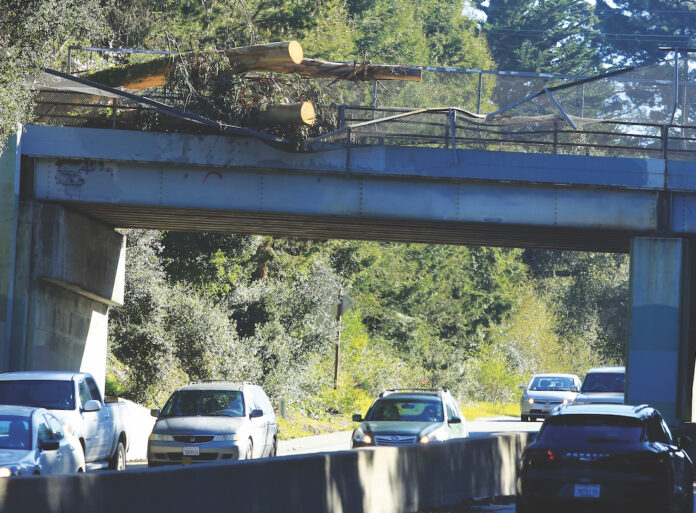By Drew Penner
Now that the congressional boundary debate’s been settled—with the old 18th and 20th districts seemingly evaporating from the local map, leaving in their place the new 19th District—politicians have begun adjusting to the new reality.
And for current Rep. Anna G. Eshoo, who’s represented the area since 1993, it’s bittersweet—even if the changes won’t take effect until after the next election cycle.
“We’ve been through a lot together,” she said. “It’s personal.”
Now Rep. Jimmy Panetta, who has represented the 20th District stretching from Santa Cruz in the north down halfway to Santa Barbara, will represent the 19th, which includes Scotts Valley and the San Lorenzo Valley.
If he’s reelected, that is.
“A lot of people don’t realize that, and they think it’s automatically happening,” he said. “The confusing thing is we’re going to be running for reelection in the new districts.”
And so, on Jan. 8, Panetta rode along with Santa Cruz County Sheriff Jim Hart, following a route through parts of the region he hasn’t represented.
“I’ve already been out and about, just within the last week, in those areas,” he said, adding that he had the chance to check out the new Felton Branch Library.
Panetta said seeing the community first-hand allowed him to get a good picture of issues faced by people in the valleys, such as homelessness, affordable housing, crime and wildfire recovery.
On top of speaking with Rep. Eshoo, Panetta says he’s already had the chance to chat with 5th District Supervisor Bruce McPherson, Scotts Valley Mayor Donna Lind (and four out of five of the city’s council members), local Democratic party members and business officials, among others.
“My intention is to be the federal representative,” he said, adding he plans to take cues from Eshoo to “show up, shut up and listen up.”
One thing Panetta says he keeps encountering is positive comments from people in the community about Eshoo’s leadership over the years.
“I cannot stress enough the impression that Rep. Eshoo has made as the federal representative of that area,” he said. “It’s definitely quite impressive and very inspiring.”
Eshoo says even after the line shift goes live she’ll still be in the corner of Santa Cruz County residents.
“What I want my constituents to know is, even though the number of their congressional district changes, I will always work to help them,” she said, suggesting a Panetta-Eshoo combo in Washington would be nothing but good news for local voters. “So, they won’t have one, they’ll have two (representatives).
“And I really mean that.”
After all, unmet community needs don’t care about what’s on human-drawn maps, she muses.
“I’ll do what I can to bring several things over the finish line,” she pledged, referring to several projects that have been held up in Congress, such as funding for the Vine Hill Elementary School child care facility in Scotts Valley. “We can build another reconciliation package if that’s what it’s going to take to get the votes through, because Republicans will not—which I really don’t understand.”
These days, Eshoo says she’s put her staff on trying to recoup money from debris-removal contractor Anvil Builders, Inc. that scored a quarter-billion-dollar post-CZU Lighting Complex job and left public roads a mess.
“I want to get that resolved,” Eshoo said. “I’ve been writing and calling … It’s very well documented the damage this private contractor did.”
Les Gardner is a businessman from Felton with decades of experience in Democratic politics. He actually let Eshoo use his home as a base of operations during one of her campaigns for Congress in the 1980s.
While he’ll be sad to see the day Eshoo no longer represents the community, he has high hopes for Panetta.
“We were lucky they brought in Jimmy, who’s knowledgeable about Santa Cruz County rather than someone who’s not,” he said, noting he already has an office in Santa Cruz. “He grew up in the area.”
Panetta reminisced about competing against San Lorenzo Valley High School as a wrestler and football player from Carmel—before Scotts Valley High School even existed.
“I’m very excited to, hopefully, be the representative of the 19th Congressional District,” Panetta said. “I’ll be able to say I represent a lot of beauty and a lot of bounty along the Central Coast.”
Gardner helped organize Panetta’s tour through Scotts Valley and Felton, including the stop at the new library. Eshoo attended the grand opening, he noted.
“I think it’s good for him to realize places of importance and interest in the entire community,” Gardner said. “It’s a wonderful facility.”
According to him, it’s important to establish a strong connection with elected officials so that when emergencies happen, they can act swiftly on the community’s behalf.
“We have landslides; we have fires; we have roads go out; we lose bridges,” Gardner said. “We’re very different than many other areas he’s going to represent, like south-San Jose, and such.”
Eshoo says she’ll miss working on behalf of local constituents, even if it’s not happening right away.
“I feel like someone is squeezing my heart,” she said. “The upside is that the change is not going to come for at least another year.”



